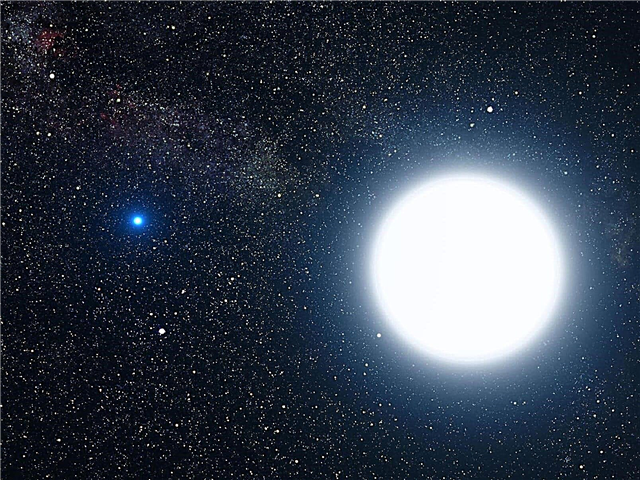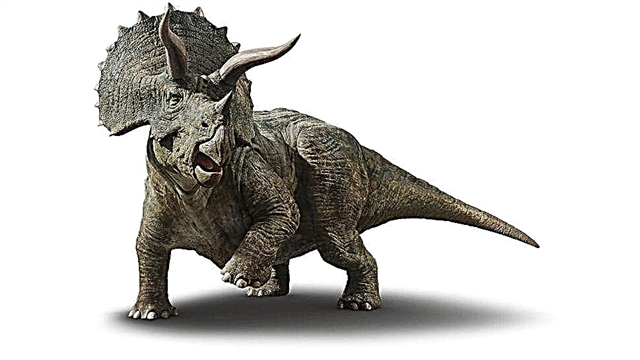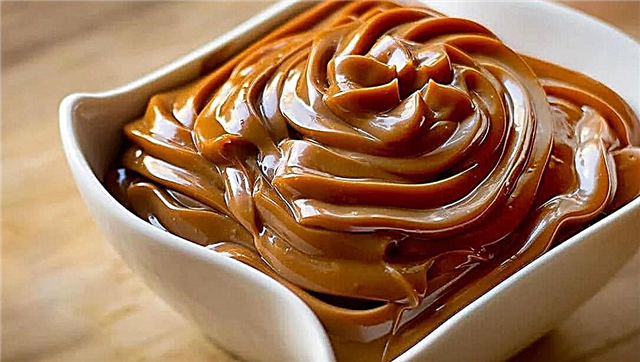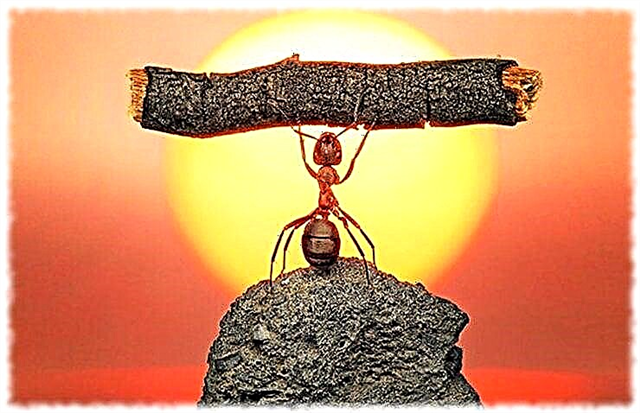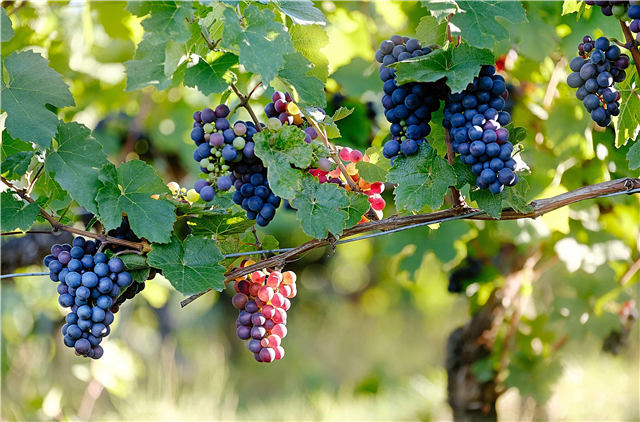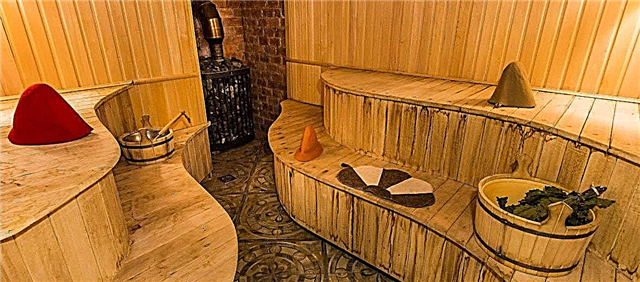
Forest ceps have long been known for their unique taste, nutrition, and many useful substances. Where to look for ceps, as well as how to recognize them among others? All useful information, supplemented by photos and videos.
Appearance
Ceps are characterized by large sizes, massive hats of a pleasant brown shade, light roundish legs. Among them are real champions.

Interesting fact: Records on the size of mushrooms were repeatedly recorded. In 1961, a mushroom weighing over 10 kg with a cap of 58 cm was found. In 1964, the second-largest mushroom was recorded, which weighed almost 7 kg.
Description
Mushrooms belong to the genus Borovik. Their characteristic feature is a distinct aroma and a light, pleasant taste. The mushroom cap can have different shades of brown. Its size in diameter varies between 7-30 cm. If the conditions are favorable, mushrooms can grow up to half a meter in the diameter of the hat.
Its appearance allows you to find out the age of the fungus. A beautiful, smooth, curved hat is distinguished by young mushrooms. And in the old, it becomes almost flat, rough. Its shade darkens with age.
The top layer of the cap, which is usually removed before further processing of the fungus, fits snugly on the pulp. Because of this, it is difficult to separate the skin. Wind, lack of moisture adversely affect the condition of the fungus. Cracks appear on the surface, due to which it quickly deteriorates. Rainy weather contributes to the appearance of a thin mucous layer.

The flesh of young specimens is white and dense. It is characterized by juiciness and subtle aroma. Old mushrooms are yellowish. With mechanical damage, the flesh almost does not change in color.
The height of the legs is about 12 cm, and the diameter is 7 cm. Under favorable conditions, large specimens are found up to 25 cm in height. Ripe mushrooms have barrel-shaped legs. In old mushrooms, it can change shape - it becomes cylindrical. The shade of the legs is from white to brown.

Borovik has a blanket. But you can see it only at the growth stage - this is the shell that protects the body. In mature specimens, the base of the leg becomes perfectly clean.
Spore powder has a rich dark green color. Disputes take on a fusiform shape and are characterized by miniature size.
Characteristic and properties
White is considered the king of all mushrooms, and is also included in the “noble” category. The blame for the excellent taste features. If in the usual form the smell and taste are weak, then after processing all the advantages of boletus are revealed.

It is used in any form - raw, dried, pickled, etc. It is recommended to use the dried mushrooms, because at the same time they have a special aroma, and the color remains the same. In addition, they are much better absorbed by the body and are characterized by low calorie content.
Where do cepes grow?
The mushroom is a cosmopolitan - that is, a widespread species. It can be found everywhere in the northern hemisphere with the exception of Australia. Europe, North America, North Africa are natural growth areas.
Within Asia, it grows in the Caucasus, the Far East, Turkey, China, Japan, Siberia, and northern Mongolia. It is believed that in the territory of South America, boletus was brought along with seedlings of conifers, on the roots of which there was mycorrhiza.
Porcini mushrooms even penetrated deep into the Arctic natural zone. Only a few varieties of boletus are found to the north. Boron mushrooms are widespread throughout the Russian Federation, but not evenly.

Interesting fact: in Italy there is a special relation to porcini mushrooms - they are very appreciated there. It is forbidden to pick mushrooms in unlimited quantities in the country. This is being monitored by the forest police.Due to the high demand, mushrooms have to be imported. Special tours to Finland are also organized to collect.
When do cepes grow?
The growth period is determined by the distribution zone. In moderate climatic conditions, mushrooms grow from summer to the end of September. Suitable temperatures in summer are from 15 to 18 ℃, and in autumn from 8 to 10 ℃.

Ideal conditions are warm nights, fogs and short thunderstorms. Optimum humidity promotes mass growth. The most active harvest season takes place in the second half of August. In regions with a warmer climate, mushrooms can be harvested from May to October.
How much does a white mushroom grow?
Mushroom grows very fast. In general, its development lasts about 8-12 days, after which the stage of destruction begins. It is recommended to collect 4-5-day-old mushrooms. For a day, boletus increases by about 2 cm in height, and also adds 40 g in weight over the same period of time.

Interesting fact: records are recorded not only in size, weight of ceps, but also in terms of their collection. For example, the first boletus of the season was discovered in Germany on May 3, and four days later there were already more than 100. The latest porcini mushrooms have been found more than once in Austria, Ukraine, and Russia. One of them was discovered in late December.
What forests grow?
Unpretentious to the environment - they can grow in forests of any type. However, mushrooms are best sprouted next to certain trees: spruce, pine, birch and oak. Suitable trees are over 50 years old. But for a pine forest, the preferred age is about 25 years.
For these mushrooms, the presence of lichen cover and mosses is optimal. Sandy, loamy soils with sufficient moisture are suitable. Marshes and peatlands are not the most successful soil types.

In general, if a fruitful year has turned out, then boletus will actively grow in both lighted and shaded areas. But at low average daily temperatures, too high a level of moisture, they appear only in areas that are warmed up by the sun.
Types of porcini mushrooms, names and photos
Varieties of boletus are more correctly called forms. In general, 18 forms are described by mycologists, although some experts consider 4 forms (pine, birch, net and dark bronze) to be separate species. The most common are the following.
Oak the mushroom has a grayish hat. Its leg looks much more massive compared to a hat, and the flesh is looser than other forms. It grows in our country (oak forests - the Caucasus, Primorsky Territory).

Reticulate characterized by a brown or yellow tint, white pulp, a cylinder leg. It grows in America, Europe, Africa mainly under deciduous trees.

Birch the mushroom is also called spikelet. Light flesh and beige shade of the hat. Its dimensions range from 5-15 cm. The leg is in the form of a barrel. It grows only under birch trees, which is why the name happened.

Dark bronze also called hornbeam. It has a darker color (with copper tones), white flesh. It is found in Europe, America within deciduous forests.

At pine shaped massive brown leg and brown hat with a purple tint. The pulp also has a brownish tint. Optimal zones are coniferous forests in Asia, Europe, and America.

Spruce It features a large thick leg and a burgundy hat. This form is considered the most common among the rest. It is found everywhere where there are fir or spruce forests (with the exception of Iceland).

Useful properties, vitamins, minerals
Boletus is a storehouse of valuable substances, like many other mushrooms. Its main advantages:
- Vitamin C. It is in the pulp and improves the vital activity of the organs of our body.
- Calcium. It is useful in general, and especially for bones, teeth.
- Vitamins of group B. Improve the activity of the central nervous system, brain. Beneficial effect on sleep, memory, mood, appetite.
- Selenium.Strengthens the immune system, cardiovascular system, performs protective functions.
- Riboflavin. Regulates the thyroid gland, strengthens hair, nails.
- Lecithin. Cleanses blood vessels, supports liver function, improves digestion, etc.

There are also vitamins A, C, D, E, enzymes, fats, minerals (potassium, zinc, iodine, magnesium, iron, etc.).
Interesting fact: In the past, the extract obtained from this fungus was used to treat frostbite.
White mushroom harm
Freshly prepared mushrooms are poorly absorbed by the body. This is due to the fact that the protein contained in them is protected by chitin walls, which are not susceptible to food enzymes.
Eating such mushrooms is not recommended for children, women during pregnancy and people suffering from kidney disease, digestive system.

Other negative consequences:
- Spores can cause allergies.
- Edible mushroom can be confused with a similar bile, causing poisoning.
- No need to pick mushrooms near roads, landfills, factories, factories. They differ in their ability to accumulate toxic substances, in particular metals.
False white mushroom. How to distinguish a white mushroom from a false one?
Bile fungus, also called mustard, is inedible. It is characterized by a bitter aftertaste, which after preparation of the product only intensifies.
Outwardly, it looks like a boletus, but some distinguishing features are:
- a mesh pattern is clearly visible on the leg (not present in the boletus);
- the tubular layer of mustard casts pink, while in a real boletus it is white or yellow;
- in the section, the bile fungus quickly becomes brownish, and the flesh of the boletus remains white;
- the spores have a pink hue, in the cep - greenish.

It is the change in the color of the pulp in the section of the bile fungus that is the main distinguishing feature, since young mustard can be light in color and even more like porcini mushrooms.
Interesting fact: Wormy bile fungi are very rare, but the presence of such traces is not evidence of edibility.
Why is a white mushroom called white?
Once upon a time, people used the word "mushrooms" only for edible varieties, and everyone else called it otherwise. For example, all the poisonous ones (except for the fly agaric) were called grebes. Since then, boletus has been considered the main fungus used in food.
Also, mushrooms were conditionally divided into white and black. The first ones are delicious, edible. The second - less valuable, but edible varieties that were worse stored and had less pronounced taste.

When exactly the boletus began to be called white, it is not known reliably. For example, in the explanatory dictionary of V. Dahl (1863-1866 edition), the term “porcini mushroom” is used in its modern meaning as a definition of a specific species. In general, such a name is chosen because it does not darken after processing.
What else is called?
The mushroom has a huge number of names, most of which are local - within a certain dialect of the Russian language. For instance:
- cow (and its derivatives: cow, mullein, cowshed, etc.);
- capercaillie;
- baby;
- belevik;
- yolk;
- expensive mushroom;
- hobbled.
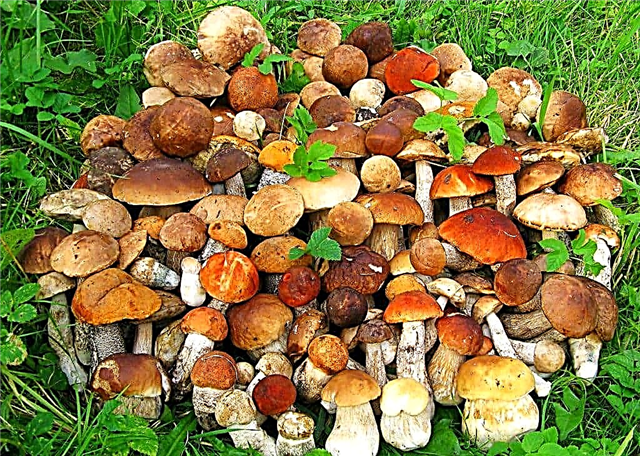
The origin of many names is difficult to determine, but most of them appeared on the basis of the characteristics of the cep, its appearance. So, capercaillie means "without holes", which indicates the density, massiveness of the fungus.
How to collect?
Collect porcini mushrooms, like any others, must be correctly, adhering to simple recommendations:
- It is important to choose the optimal weather conditions for the collection. If drought prevails in recent days, you should abandon the campaign for mushrooms. Dry air quickly deprives the flesh of moisture, which in turn contributes to the accumulation of harmful substances.
- Wet, warm weather is best suited without sudden changes in temperature. Morning time is considered ideal when the mushrooms have the most moisture. So they will be stored longer.
- Strongly wormy mushrooms cannot be harvested due to the risk of poisoning. You can check the quality of the fungus with traces of damage by cutting it in half.
- Too large boletus indicate its age. Such copies are not recommended for use, because in them a high concentration of harmful substances is likely.
- Porcini mushrooms can be collected only in those places near which there are no tracks, pastures, agricultural and industrial facilities, landfills with waste, etc.

It is important not only to collect mushrooms correctly, but also not to damage nature. Poisonous mushrooms are not suitable for human consumption, but this does not mean that they can be destroyed. They are also an important part of the natural ecosystem. Mushrooms are carefully cut with a knife or twisted, but do not root out.

Interesting fact: spoiled or old mushroom can be hung upside down. So spores will spill out of it on the ground, and the fruiting body will dry naturally and serve as food for forest animals.
How to harvest and store?
It is necessary to process the collected porcini mushrooms for further storage quickly (in the next 10 hours) in order to save the maximum of useful substances. The processing method depends on how it is planned to store the mushrooms.
Here are some suggestions:
- Before putting the boletus in the collection container, it must be carefully cleaned of sand, earth. The lower part of the leg is usually cut off.
- If the fungus is only slightly affected by the worm, the damaged part can be immediately cut and discarded.
- If porcini mushrooms are very dirty, they can be soaked for 15 minutes in salt water.
- But this method is not suitable for further drying, since excess moisture can cause mold.

Mushrooms can be frozen, canned, pickled or salted for long-term storage. But it’s best to dry it in any convenient way: in a special device, in a warm place with good ventilation, in the oven, etc. The shelf life of dried mushrooms is 12 months, provided that the correct conditions are met (dry room with a temperature of -2 ℃ to + 18 ℃).
Growing porcini mushrooms at home
Growing mushrooms on your own is not as difficult a task as it might seem at first glance. You can do this on your own site. There are two main ways of growing:
- from mycelium;
- from hats.

Both methods should be considered in more detail. But there are some general requirements. Planting material must be handled with extreme care. Have to be patient and assiduous. Ceps cannot grow separately from trees, so the ideal option is to locate the site on the outskirts of the forest. At a minimum, you must have at least several trees: pines, oaks, birches or firs.
Interesting fact: yield of porcini mushrooms - from 64 to 260 kg per hectare per season.
Cultivation of mycelium
Mycelium or mycelium - the basis for growing mushrooms, which must be purchased in a specialized store. The next step is preparing the soil. The optimal landing time is considered to be the period from May to September, but not later.

Planting and care process:
- The soil around the above trees is exposed. It is necessary to remove about 20 cm of soil. The soil is still useful for sheltering mushrooms. Thus, we get a plot with a diameter of about 1.5 m.
- Compost or peat is laid on top.
- Now you can spread the mycelium. It is recommended to arrange its pieces in a checkerboard pattern, observing a distance between them of about 30 cm.
- The mycelium hides from above with soil remaining after the first step.
- It is necessary to carefully water the area with about 20-30 liters of water. It is important at this stage not to erode the soil.
- To create the necessary level of moisture, the site can be covered with straw.
- Before frost, the planting site of the mycelium is additionally covered with moss, which is then harvested in the spring.
The first mushrooms will appear a year after planting.Subject to all the rules, the mycelium gives fruit within 3-5 years.
It is also possible to grow mushrooms in a similar way - by planting a dried tubular layer.
Hats growing
The second method of growing porcini mushrooms at home allows you to do without purchased mycelium. But for this it is necessary to pre-engage in collecting mushrooms - only hats will be needed. It is important in the collection process to remember under which trees the mushrooms grew, so that later they can be planted under the same trees.

Processing and planting procedure:
- Hats must be filled with water for a day. Also, alcohol is added to the water in the ratio of 4 tablespoons per 10 liters.
- After 24 hours, the hats are crushed directly in water to a uniform consistency.
- The resulting mass is filtered through gauze. As a result, we have a solution with spores of ceps.
- The soil for planting is prepared in the same way as in the case of mycelium.
- Stirring occasionally, an aqueous solution with spores is evenly poured onto the prepared area.
- In the future, the meadow needs to be occasionally, but abundantly watered to maintain the desired moisture level.
Mushrooms in the forest grow a fairly large distance, but the mycelium is hidden under a layer of soil, leaves, twigs, etc. Often, mushrooms grow so that most of the fungus hides underground, and only hats can be seen from above.
Many mushroom pickers will confine themselves to cutting off the hats and legs, which are only a couple of centimeters above the soil. But it is worth examining such a mushroom carefully - carefully remove the leaves, the ground. It is likely that the main fruiting body is in the ground. It is better not to cut such a mushroom, but to unscrew it.

As a result, the total weight of the collected mushrooms will be much larger. With experience, you can learn to visually identify such mushrooms and the best way to collect them.

